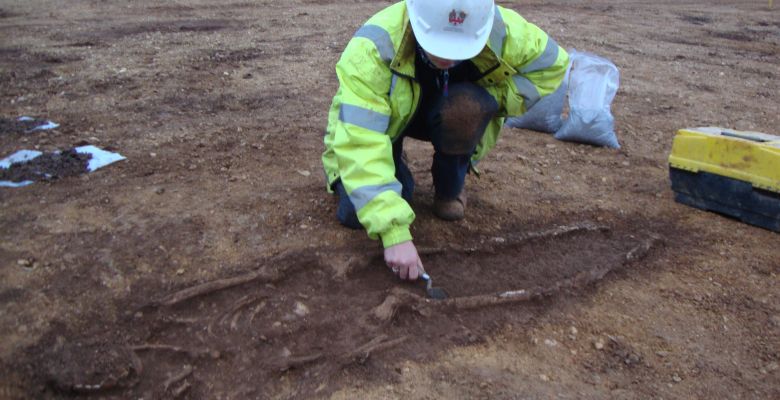EcoNorth and Archaeological Research Services (ARS) are working together to offer a single comprehensive service combining ecology and archaeology. Find out about ARS and our collaboration here.
Through EcoNorth’s extensive experience in delivering a wide range of services on development projects it is clear that archaeology is a significant consideration for our clients. Indeed, many of our projects have a direct involvement with historical landscape.
Despite seeming mostly unrelated, both sciences are concerned with preserving our environment (natural or historical), so in some circumstances the interest of both fields aligns; as was the case, in one of our projects, when a hedgerow pre-dating 1845 was identified. The Hedgerow Regulation (1997) protects hedgerows based on their historical and/or ecological value. The hedgerow in this case was considered important as it was established prior to 1850. Retaining this hedgerow not only helps preserve our country’s history but it also presents many opportunities for biodiversity as ancient hedgerows tend to support a wide diversity of plants animals, providing favourable habitat for many invertebrates, foraging habitat for bats and birds, and nesting opportunities for birds.
Nonetheless in some case archaeological investigations (as with any excavation work) have the potential to impact biodiversity. We encountered such a case when seven trial trenches were to be excavated in an area of diverse grassland near a Local Wildlife Site primarily designated for its botanical importance. In order to minimize negative impacts on the grassland, we were able to work with archaeologists to understand their requirements for the works and to develop a detailed method statement to undertake the investigation while protecting habitats. This method statement set out vehicle access routes and trench locations away from sensitive areas, as well as outlining the requirement for turf removal and replacement to allow the regeneration of the vegetation.
Similarly, when trial trenches were to be excavated near a pond known to be used by great crested newts the County Council Ecologists identified the potential risk to species. To prevent any harm to the newts, we again created a detailed method statement, undertook careful vegetation management and provided Ecological Clerk of Works (ECoW) function to enable archaeological works to proceed.
Working alongside archaeologists continues to increase our understanding of where ecological works or proposals may conflict with the archaeological interests of a site.
The synergy between ecology and archaeology has lead EcoNorth to look to work more closely with archaeology experts at ARS to combine our skills into a more cohesive service. Our aim of collaborative work will be to provide clients with an efficient and cost-effective project with integrated programming. This will allow us to preempt any conflicts, and present constraints and opportunities of the projects jointly thus avoiding any unwelcome surprise and costly delays.

